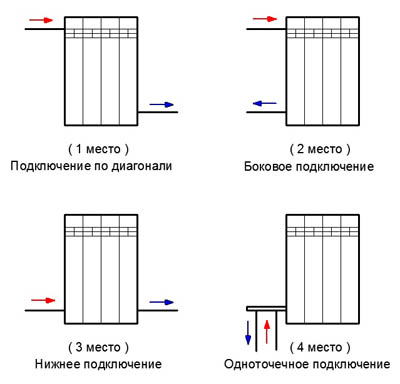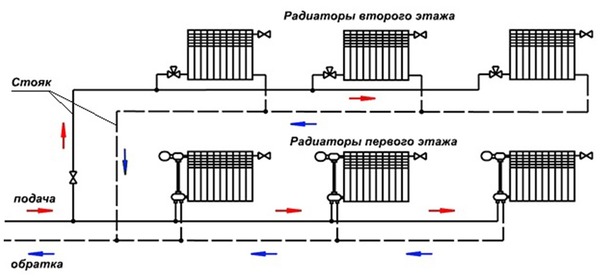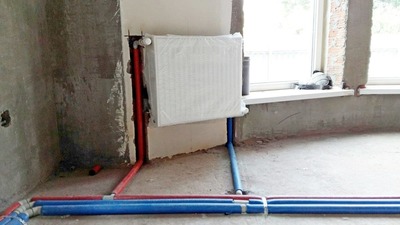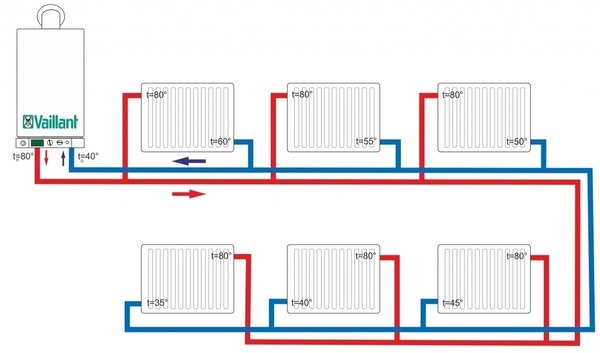It sounds confusing, but in reality it’s all very simple: where the supply and return lines are in the heating system

The efficiency of the heating system in the house will depend on how efficiently it operates. Family comfort in winterIf the batteries do not heat up well, it is necessary to eliminate the malfunction, and for this it is important to know how the heating works in general.
Water heating of the space is a source of heat and coolant that is distributed through the radiators. Feed and return are present in one- and two-pipe systems. In the second, there is no clear distribution, the pipe is conventionally divided in half.
Features of the supply in the heating system
Heat supply comes straight from the boiler, the liquid is distributed through the batteries from the main element - the boiler (or the central system). It is typical for single pipe systems. If it is improved, it will be possible to insert pipes into the return line as well.

Photo 1. Heating diagram for a private two-story house with supply and return pipes indicated.
Where does the return line go?
In short, the heating circuit consists of: several important elements: heating boiler, radiators and expansion tank. In order for heat to flow through the radiators, it is necessary coolant: water or antifreezeIf the circuit is constructed correctly, the coolant is heated in the boiler, rises through the pipes, increasing its volume, and all the excess goes into the expansion tank.
Based on the fact that the batteries are filled with liquid, hot water displaces cold water, which in turn gets into the boiler again for subsequent heating. Gradually the degree of water increases and reaches the desired temperature. Circulation the coolant may be natural or gravitational, carried out with the help of pumps.
Based on this, the return line can be considered a heat carrier that has passed through the entire circuit, giving off heat, and, already cooled, has again entered the boiler for subsequent heating.
Differences between them

The difference between the described concepts is as follows:
- The feed is a coolant that goes through the radiators. from the heat source.
- The return is the liquid that has passed through the entire circuit and, having cooled down, has returned to the heat source for subsequent heating. Therefore, happens at the exit.
- Temperature difference: return colder.
- The difference is in the installation. The water pipe that is attached to the top batteries, is the feed. What is attached to the bottom - return.
Important! There are some tips that need to be followed. The whole system should be completely filled with water or antifreezeMaintaining the speed of fluid movement, its circulation and pressure is no less important.
Temperature difference on radiators
The temperature difference should be 30 °C. At the same time to the touch batteries will be approximately the sameIt is important to ensure that the difference between these values is not too large.

Photo 2. Heating diagram for 6 radiators: changes in the supply and return temperatures for each of them are indicated.
Useful video
The video addresses the question: where is it better to install a circulation pump, on the supply or return line?
Comparison results
To sum it up, it becomes clear that single pipe wiring system with the return has the greatest prospects, especially for multi-storey buildings. Ease of installation, low cost and a small number of communications still have an advantage over a two-pipe with feed.
However, it is important to remember that using a two-pipe schemes, perhaps regulate the heating temperature for each device separately.





